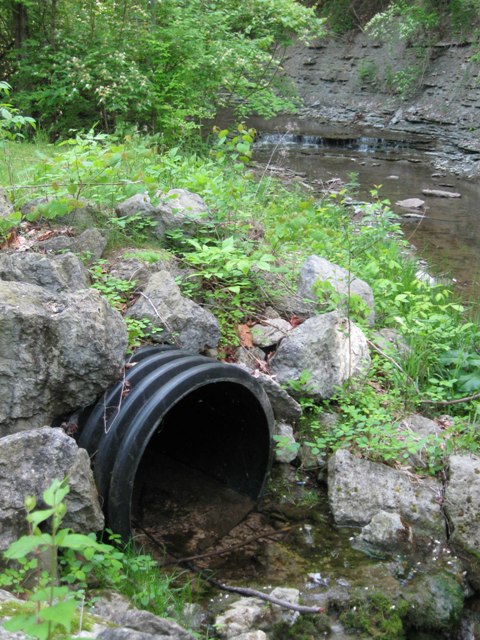 What is a Municipal Separate Storm Sewer System (MS4)?
What is a Municipal Separate Storm Sewer System (MS4)?
The Storm Water Phase II Rule is the next step in U.S. EPA's effort to preserve, protect, and improve the nation's water resources from polluted storm water runoff. Phase II is intended to further reduce adverse water quality and aquatic habitat conditions by instituting the use of controls on the unregulated sources of storm water discharges that have the greatest likelihood of causing environmental degradation.
The Phase II rule automatically covers on a nationwide basis all small municipal separate storm sewer systems (MS4s) located in "urbanized areas" as delineated by the Census Bureau, and those potentially designated MS4s located outside the urbanized areas. This regulation also affects runoff from prisons, hospitals, military bases, etc. which are located within the urban areas. The 2000 Census determined the final list of communities. The Ohio EPA sent a letter to notify those automatically designated MS4s located within the urbanized area.
The Phase II Rule defines a small MS4 storm water management program as comprised of six minimum control measures that, when administered in concert, are expected to result in reduction of the discharge of pollutants into receiving water bodies. Operators of regulated small MS4s are required to design their programs to do the following: reduce the discharge of pollutants to the "maximum extent practicable" (MEP), protect water quality and satisfy the appropriate water quality requirements of the Clean Water Act. Implementation of the MEP standard will require the development and implementation of best management practices and the achievement of measurable goals to satisfy each of the following six minimum control measures:
- Public Education and Outreach: Distributing educational materials and performing outreach to inform citizens about the impacts polluted storm water runoff discharges can have on water quality.
- Public Participation/Involvement: Providing opportunities for citizens to participate in program development and implementation, including effectively publicizing public hearings and/or encouraging citizen representatives on a storm water management panel.
- Illicit Discharge Detection and Elimination: Developing and implementing a plan to detect and eliminate illicit discharges to the storm sewer system (includes developing a system map and informing the community about hazards associated with illegal discharges and improper disposal of waste).
- Construction Site Runoff Control: Developing, implementing and enforcing an erosion and sediment control program for construction activities that disturb one or more acres of land (controls could include silt fences and temporary storm water detention ponds).
- Post-Construction Runoff Control: Developing, implementing and enforcing a program to address discharges of post-construction storm water runoff from new development and redevelopment areas. Applicable controls could include preventive actions such as protecting sensitive areas (e.g., wetlands) or the use of structural BMPs such as grassed swales or porous pavement.
- Pollution Prevention/Good Housekeeping: Developing and implementing a program with the goal of preventing or reducing pollutant runoff from municipal operations. The program must include municipal staff training on pollution prevention measures and techniques (e.g., regular street sweeping, reduction in the use of pesticides or street salt, or frequent catch-basin cleaning).
Ohio EPA MS4 Program Overview
Helpful Information for Residents and Businesses